Engage NY Eureka Math 8th Grade Module 3 Lesson 13 Answer Key
Eureka Math Grade 8 Module 3 Lesson 13 Exercise Answer Key
Exercises
Use the Pythagorean theorem to determine the unknown length of the right triangle.
Exercise 1.
Determine the length of side c in each of the triangles below.
a. 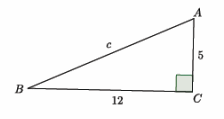
Answer:
52+122=c2
25+144=c2
169=c2
13=c
b. 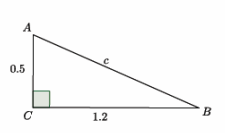
Answer:
0.52+1.22=c2
0.25+1.44=c2
1.69=c2
1.3=c
Exercise 2.
Determine the length of side b in each of the triangles below.
a. 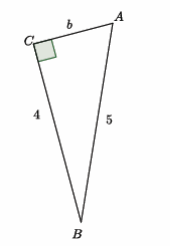
Answer:
42+b2=52
16+b2=25
16-16+b2=25-16
b2=9
b=3
b. 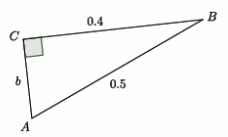
Answer:
0.42+b2=0.52
0.16+b2=0.25
0.16-0.16+b2=0.25-0.16
b2=0.09
b=0.3
Exercise 3.
Determine the length of \(\overline{Q S}\). (Hint: Use the Pythagorean theorem twice.)
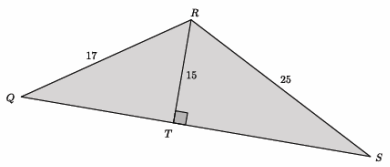
Answer:
152+|QT|2=172
225+|QT|2=289
225-225+|QT|2=289-225
|QT|2=64
|QT| = 8
152+|TS|2=252
225+|TS|2=625
225-225+|TS|2=625-225
|TS|2=400
|TS|=20
Since |QT|+|TS|=|QS|, then the length of side \(\overline{Q S}\) is 8+20, which is 28.
Eureka Math Grade 8 Module 3 Lesson 13 Exit Ticket Answer Key
Determine the length of side \(\overline{B D}\) in the triangle below.
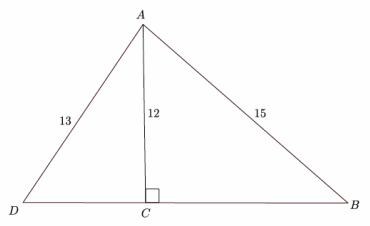
Answer:
First, determine the length of side \(\overline{B C}\).
122+BC2=152
144+BC2=225
BC2=225-144
BC2=81
BC=9
Then, determine the length of side \(\overline{C D}\).
122+CD2=132
144+CD2=169
CD2=169-144
CD2=25
CD=5
Adding the lengths of sides \(\overline{B C}\) and \(\overline{C D}\) determines the length of side \(\overline{B D}\); therefore, 5+9=14. \(\overline{B D}\) has a length of 14.
Eureka Math Grade 8 Module 3 Lesson 13 Problem Set Answer Key
Students practice using the Pythagorean theorem to find unknown lengths of right triangles.
Use the Pythagorean theorem to determine the unknown length of the right triangle.
Question 1.
Determine the length of side c in each of the triangles below.
a. 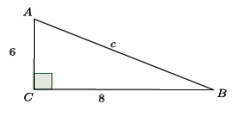
Answer:
62+82=c2
36+64=c2
100=c2
10=c
b. 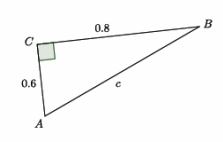
Answer:
0.62+0.82=c2
0.36+0.64=c2
1=c2
1=c
Question 2.
Determine the length of side a in each of the triangles below.
a. 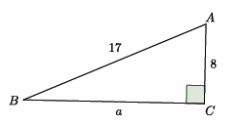
Answer:
a2+82=172
a2+64=289
a2+64-64=289-64
a2=225
a=15
b. 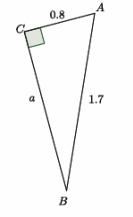
Answer:
a2+0.82=1.72
a2+0.64=2.89
a2+0.64-0.64=2.89-0.64
a2=2.25
a=1.5
Question 3.
Determine the length of side b in each of the triangles below.
a. 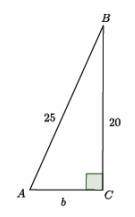
Answer:
202+b2=252
400+b2=625
400-400+b2=625-400
b2=225
b=15
b. 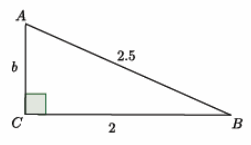
Answer:
22+b2=2.52
4+b2=6.25
4-4+b2=6.25-4
b2=2.25
b=1.5
Question 4.
Determine the length of side a in each of the triangles below.
a. 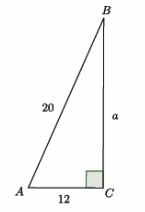
Answer:
a2+122=202
a2+144=400
a2+144-144=400-144
a2=256
a=16
b. 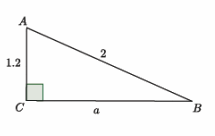
Answer:
a2+1.22=22
a2+1.44=4
a2+1.44-1.44=4-1.44
a2=2.56
a=1.6
Question 5.
What did you notice in each of the pairs of Problems 1–4? How might what you noticed be helpful in solving problems like these?
Answer:
In each pair of problems, the problems and solutions were similar. For example, in Problem 1, part (a) showed the sides of the triangle were 6, 8, and 10, and in part (b), they were 0.6, 0.8, and 1. The side lengths in part (b) were a tenth of the value of the lengths in part (a). The same could be said about parts (a) and (b) of Problems 2–4. This might be helpful for solving problems in the future. If I am given side lengths that are decimals, then I could multiply them by a factor of 10 to make whole numbers, which are easier to work with. Also, if I know common numbers that satisfy the Pythagorean theorem, like side lengths of 3, 4, and 5, then I recognize them more easily in their decimal forms, that is, 0.3, 0.4, and 0.5.